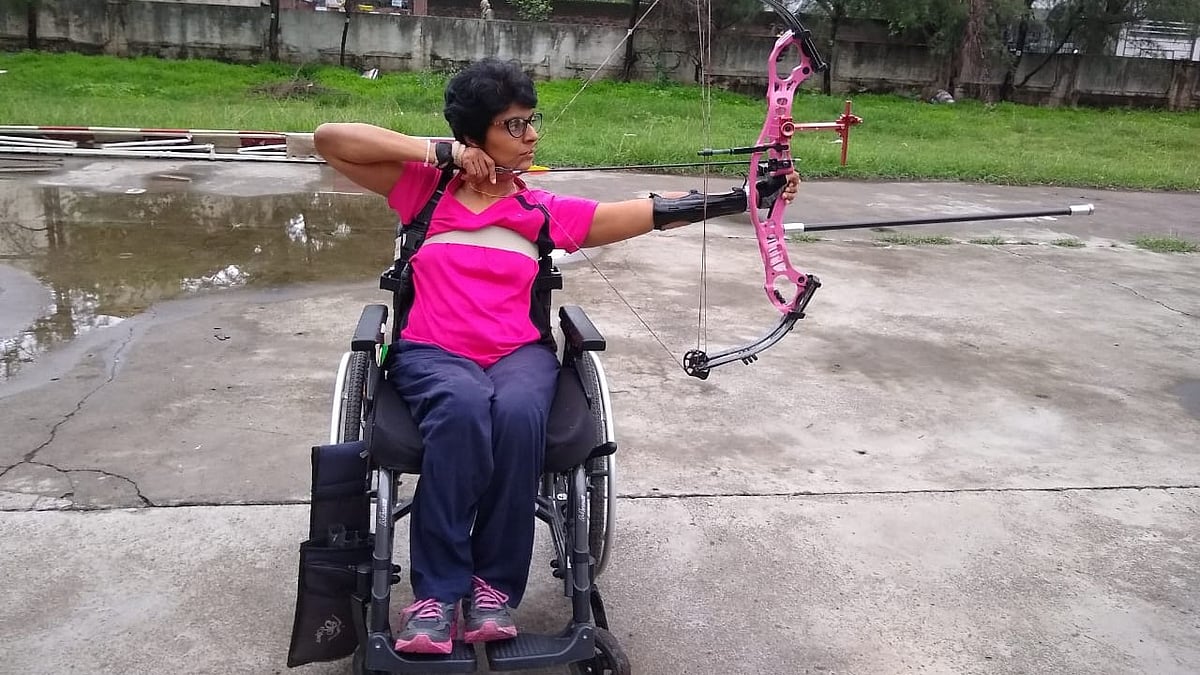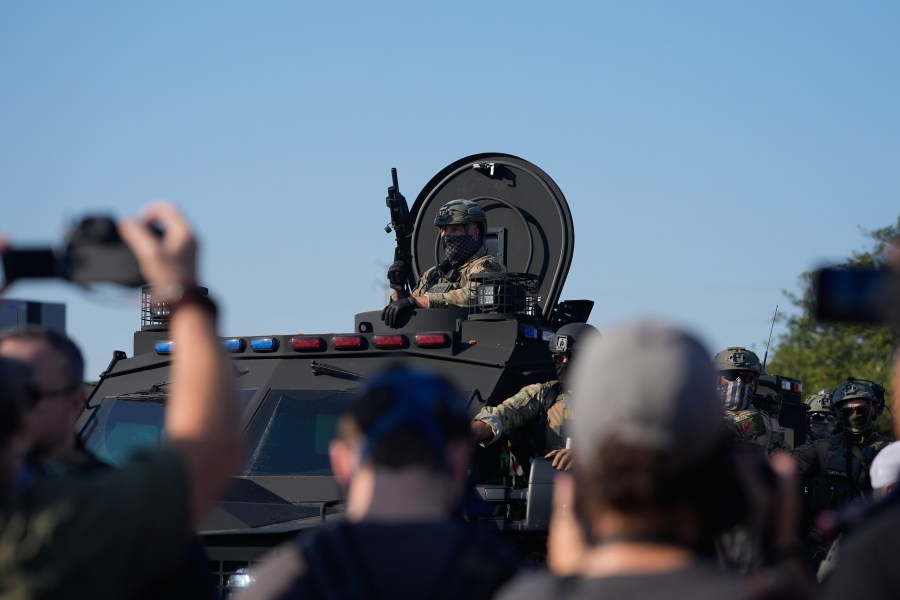How you recover from the challenges that life throws at you truly defines you. Anjali Shinde is a fighter who has literally changed the way we look at the physically challenged in sports. This award-winning gymnast from Mumbai is also a Mallakhamb winner at local and national levels.
Anjali met with an unfortunate accident in 1985 when she fell from a rope while practising gymnastics. Though paralysed from the waist downwards, she did not let the injury keep her down. At 45, she picked up archery and won a Gold in the 50+50 Meter Compound Round (Women – W1 category) in the National Para-Archery Championship held in Rohtak, India, in 2019.
She has inspired many, and now a well-known Marathi director wants to make a film on her life. Anjali speaks to The Free Press Journal about her astonishing journey into sports and the possibility of a film on her life. Excerpts from the interview follow.
—
**Do tell us a bit about yourself.**
I have three older sisters. My dad was a deep-sea diver in the Indian Navy, and my mom is a homemaker. It was an inter-caste marriage—my dad is Maratha, and my mom is Parsi.
**You had a life full of challenges.**
I lived at Shivaji Park near Samarth Vyayam Mandir. I started going there with my elder sisters and fell in love with gymnastics and the Rope Mallakhamb. I excelled at both. However, an accident in 1985 left me disabled.
We stayed on the third floor of a building without a lift, so I was mostly stuck at home and couldn’t finish school.
**Then what happened?**
We moved to Pune in 2016, about 20 years after my accident, to make life easier for me. Till then, it was an emotional and physical struggle, which to a certain extent still is. Since it’s a spinal cord injury, my spinal cord is out, and that causes ongoing health problems.
I tried my hand at a lot of things before settling on archery. Whenever I visited my sister in New Zealand, I saw physically challenged people doing many activities, including horse riding. I learnt that and was good at it too. The lady who taught me even requested that I settle there and represent her country in the sport.
I used to swim there as well. My arms and upper body were strong, and she used to tie a float to assist me.
—
**How did archery happen?**
When I moved to Pune, I met a friend who mentioned there was a guy practicing archery and looking for someone to play mixed doubles with him. I said I’d like to check it out because I wanted to get back into some kind of sport but didn’t know how.
When I got this opportunity, coach Ranjeet Chamle encouraged me. Surprisingly, I was quite good. He told me I should take it seriously, which excited me a lot.
—
**What about competitions?**
Within a month, a national competition was coming up, and my coach told me I had to participate. I was a last-minute entry and, as it turns out, the only woman in India with my level of injury competing in the W1 category.
I went to the nationals in Rohtak and did well for someone who had only practiced for a month. I used someone else’s equipment but still managed to get a good score and won the gold.
After that, I was selected for the camp held in Rohtak. You would think there were better facilities there, but it was quite disappointing. Even to get to the practice range, you had to do a cross-country kind of trek. My sister was with me during the month-long camp because someone had to stay with me. She had to propel my wheelchair across rough terrain and carry the equipment.
—
**Archery is an expensive sport…**
You are right. We didn’t have any fixed income after my dad’s death in 2006. It’s just my mom and me now.
I tried doing odd jobs, like making handmade cards for Diwali for my brother-in-law and Christmas cards for my physiotherapist, who is now settled in the US. I did this until before COVID.
I also did data entry jobs for my friends. Manjari Marathe, who is like a sister to me, and her husband had started a computer startup. They helped me a lot.
—
**There’s now a film being made about your life, if I’m not wrong?**
That is still in the pipeline. I don’t think we want to talk about it at this stage.
**Hypothetically, how do you see the film changing the way people look at you?**
Honestly, I don’t think I have much of a story to tell. I don’t know what people can take from my life, but my family—my niece and my nephew—say I am quite an inspiration.
You don’t realize it because it’s a part of your life. But for us and my family, they think I do things they wouldn’t even consider doing.
If a third person sees me doing something, that may inspire them, make them feel good, or change their thought process.
Whenever I used to visit doctors, they were impressed and told me I should talk to patients because many of them go into depression. But I’m miles away from that.
People are amazed whenever I get down from my wheelchair. If you see me sitting in my wheelchair, you wouldn’t know anything is wrong with me. People even say blunt things sometimes because they think I look fine.
—
**What do you want people to take from what you have gone through to be who you are right now?**
Acceptance. The earlier the acceptance, the easier life becomes. This applies to everyone.
I am physically challenged in a certain way. You are challenged in your own way. Everyone fights their own battles; I’m fighting mine. It’s a matter of perspective.
—
**You spoke about struggles regarding playing sports, facilities, and mobility. What are the things you want to change in this regard?**
I would like more awareness on both sides.
For us, we need to know all the options available, like removing architectural barriers. If that is sorted out, it will be a milestone for the physically challenged.
If you think about it, physically challenged people and senior citizens are not considered at all when designing roads and pathways.
I would say it’s even difficult for able-bodied people to walk on a footpath. Imagine how hard it is for us.
For example, there is an elevator in my building, but there are a few steps to get to it, which negates the whole point of having a lift. These little things often go unnoticed.
Secondly, people should stop staring and help if needed.
—
Anjali Shinde’s story is one of resilience, determination, and breaking barriers. Her journey is a powerful reminder that the human spirit can triumph over adversity and inspire change in society’s perception of the physically challenged.
https://www.freepressjournal.in/weekend/i-wanted-to-get-back-into-some-kind-of-sport-anjali-shinde-on-her-journey-from-gymnast-to-para-archery-gold



